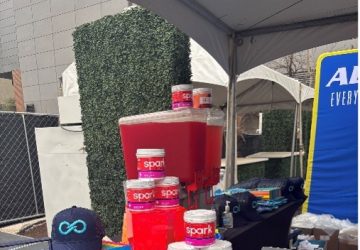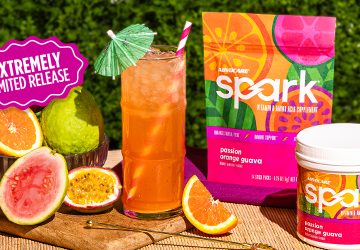
Are you training for an upcoming competition or fitness event? Looking to get more out of your workout sessions? Whether you’re an athlete or a fitness hobbyist, it’s always a great time to find ways to help improve your performance. Here are some of our top tips!
Tip # 1: Build a Strong Lower Body
Our hips and legs are the foundation for many active movements. So, it makes sense that a strong and powerful lower body is important in improving fitness and sports performance. There also tends to be a correlation between increased lower body strength and reduced risk for injury.1 Working on your lower body strength doesn’t have to be complicated either. A few of our favorite moves include squats, lunges and deadlifts. For more ideas on lower body movements, check out our post 4 Moves to Build Lower Body Strength.
Tip # 2: Work on Your Core
If you automatically think that your core is the same as your abs, you’re not totally wrong, but let’s clear things up a little bit. Yes, your core does include your abdominals and so much more. Think of ALL the deep muscles that attach to your spine and pelvis, that is your core! Having a strong core allows you to move with proper balance and posture. Additionally, a strong core is also associated with a decrease in overall injury and lower back pain.2 But, before you start doing endless crunches, try movements that activate your deep core muscles, like planks, dead-bugs or hollow holds.3
Tip #3: Move in Transverse and Frontal Planes
Here’s a crash course in the three planes of motion:
- Sagittal Plane: Forward and backward movements
- Transverse Plane: Lateral movements
- Frontal Plane: Rotary movements
It’s probably easiest to think of movements that occur in the sagittal plane – because they are abundant! That’s also why it’s important not to neglect exercises that also get you to move laterally and in a twisting motion.4 Ensuring that your workouts include movements that are in all three planes of movement prepares your body for multiple activities and more closely mimics how we move in everyday life.5
Tip #4: Consider Supplementation
Another great way to support your body in training is to explore supplements that can support you before, during or after training. For endurance activities, such as cycling or running, this may include an electrolyte replacement such as AdvoCare Rehydrate® or Rehydrate Gel. Other supplements can help aid in muscle recovery, such as Post-Workout Recovery or Nighttime Recovery.
Before beginning any exercise program or changing your physical activity patterns, you should always consult with your doctor or physician, particularly if you have been injured or have a medical condition.
Sources
1 Lower body strength and athletic performance. Sports Performance Tracking. (n.d.). Retrieved May 18, 2022, from https://sportsperformancetracking.com/blogs/spt-playbook/lower-body-strength-and-athletic-performance
2 Why having a strong core can help your entire body. Banner. (n.d.). Retrieved May 18, 2022, from https://www.bannerhealth.com/healthcareblog/better-me/five-reasons-why-your-core-is-so-important#:~:text=Your%20core%20includes%20all%20the,muscles%20and%20pelvic%20floor%20muscles
3 Sgobba, A. T. and C. (2016, September 13). 8 ABS exercises to work the deepest muscle in your core. SELF. Retrieved May 18, 2022, from https://www.self.com/story/the-abs-defining-muscle-youre-not-working
4 Payne, A. (n.d.). Sagittal, frontal and transverse plane: Exercises and movements. NASM. Retrieved May 18, 2022, from https://blog.nasm.org/exercise-programming/sagittal-frontal-traverse-planes-explained-with-exercises
5 Frey, M. (2020, December 1). What are the three planes of Motion? Verywell Fit. Retrieved May 18, 2022, from https://www.verywellfit.com/what-are-the-three-planes-of-motion-5088696




